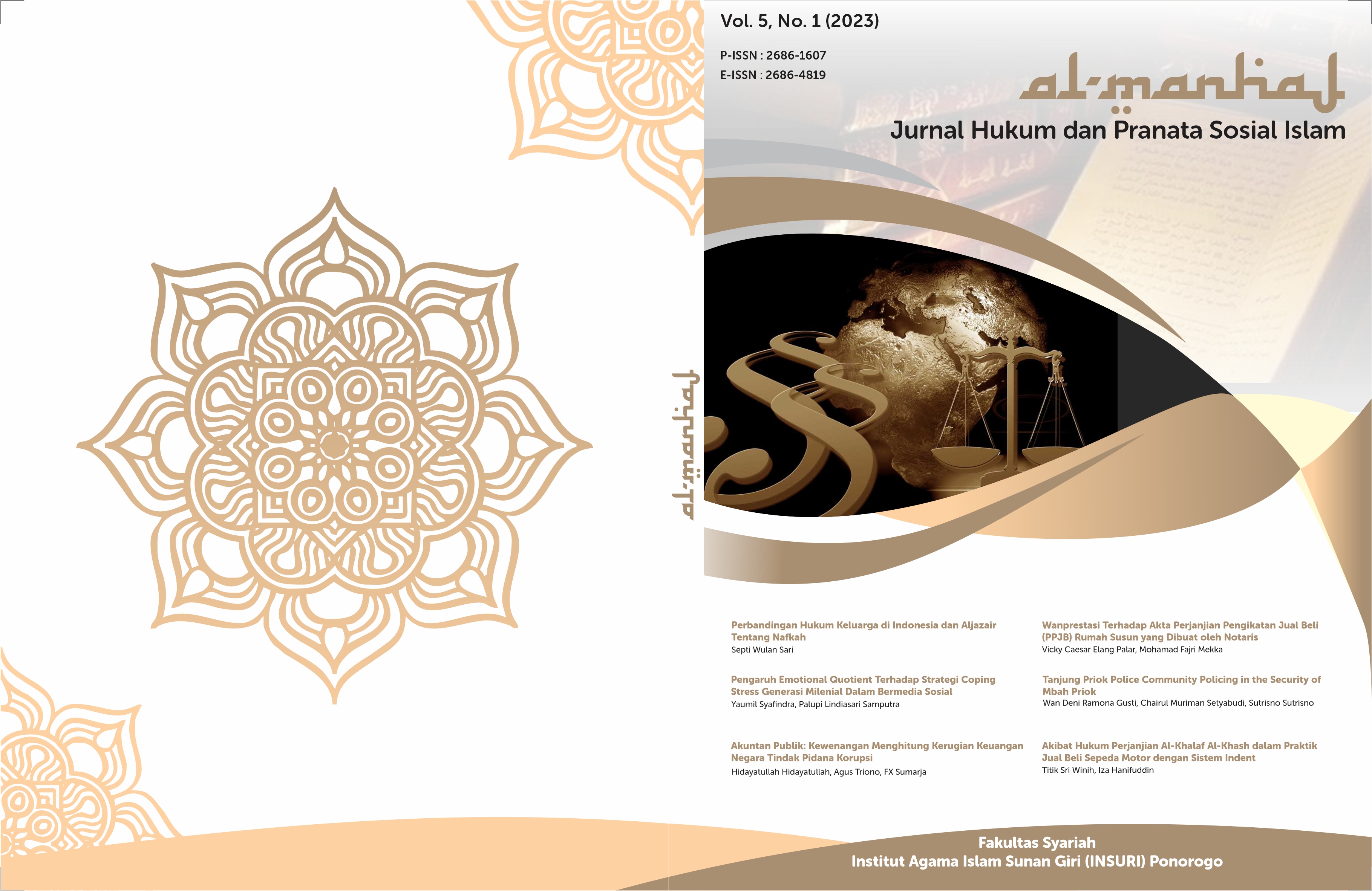Akibat Hukum Terhadap Notaris Yang Membuat Akta Diluar Wilayah Jabatan Notaris Ditinjau Dari Undang-Undang Nomor 2 Tahun 2014 Tentang Perubahan Atas Undang-Undang Nomor 30 Tahun 2004 Tentang Jabatan Notaris
DOI:
https://doi.org/10.37680/almanhaj.v5i1.2513Keywords:
Notary; Deed; TerritoryAbstract
This writing aims to determine the legal consequences of a notary when making a deed outside the territory of his office. In this study, the authors used normative data collection techniques carried out by conducting a library search and supported by primary raw materials in the form of applicable laws and regulations, and secondary raw materials in the form of books, articles, and magazines, Pasal 17 letter a Law of The Republic of Indonesia Number 2 of 2014 concerning the Position of Notary. Determining “Notaries are prohibited from carrying out positions outside their territory of office” is in line with the prohibition of notaries making deeds outside their working area. If a notary draws up a deed outside his territory of office, he will be subject to sanctions contained in Pasal 17 Paragraph (1) of Law Number 2 of 2014 concerning the Position of Notary.
References
Anshori, A. G. (2009). Lembaga Kenotariatan Indonesia: Perspektif Hukum dan Etika. Yogyakarta: UIIi Press.
Budiono, H. (2013). Kumpulan Tulisan Hukum Perdata di Bidang Kenotariatan. Bandung: PT. Citra Aditya Bakti.
Friedmann, W. (1990). Teori dan Filsafat Hukum Telaah Kritis Atas Teori-Teori Hukum (Susunan I). Yogyakarta: Rajawali Pers.
Ibrahim, J. (2005). Teori dan Metodologi Penelitian Hukum Normatif. Depok: Bayu Media Publishing.
Indrawan, L. N. (2018). Akibat Hukum Akta Notaris yang Dibuat Diluar Wilayah Jabatan Notaris. Mataram: Skripsi Universitas Mataram.
Palar, V. C. E., & Mekka, M. F. (2023). Wanprestasi Terhadap Akta Perjanjian Pengikatan Jual Beli (PPJB) Rumah Susun yang Dibuat oleh Notaris. AL-MANHAJ: Jurnal Hukum Dan Pranata Sosial Islam, 5(1), 35–48.
Pandu, Y. (2009). Himpunan Peraturan Perundang-Undangan Jabatan Notaris dan PPAT. Jakarta: Indonesia Legal Publishing.
Pearson, G. (2022). Who is Permitted to View a Notary Journal. Retrieved April 1, 2023, from https://notary.pandadoc.com/blog/who-is-permitted-to-view-notary-journal/
Pemerintah RI. (2014). Undang-Undang Nomor 2 Tahun 2014 tentang Perubahan atas Undang-Undang Nomor 30 Tahun 2004 tentang Jabatan Notaris. Jakarta: Sekretariat Negara.
Sabnani, R. A. (2010). Tinjauan Yuridis Terhadap Pelanggaran Hukum yang Dilakukkan oleh Notaris Sebagai Pejabat Umum dalam Melaksanakan Tugas dan Jabatannya. Jakarta: Disertasi Universitas Indonesia.
Soekanto, S. (2007). Pengantar Penelitian Hukum. Jakarta: UI Press.
Soemitro, R. H. (1990). Metodologi Penelitian Hukum. Jakarta: Ghalia Indonesia.
Soeroso, R. (2014). Pengantar Ilmu Hukum. Jakarta: Sinar Grafika.
Downloads
Published
How to Cite
Issue
Section
License
Copyright:
- Author retains the copyright and grants the journal the right of first publication of the work simultaneously licensed under a Creative Commons Attribution 4.0 International License that allows others to share the work with an acknowledgment of the work's authorship and initial publication in this journal.
- Author is able to enter into separate, additional contractual arrangements for the non-exclusive distribution of the journal's published version of the work (e.g., post it to an institutional repository or publish it in a book) with the acknowledgment of its initial publication in this journal.
- Author is permitted and encouraged to post his/her work online (e.g., in institutional repositories or on their website) prior to and during the submission process, as it can lead to productive exchanges, as well as earlier and greater citation of the published work (See The Effect of Open Access).
License:
-
Attribution — You must give appropriate credit, provide a link to the license, and indicate if changes were made. You may do so in any reasonable manner, but not in any way that suggests the licensor endorses you or your use.
-
No additional restrictions — You may not apply legal terms or technological measures that legally restrict others from doing anything the license permits.
You are free to:
- Share — copy and redistribute the material in any medium or format
- Adapt — remix, transform, and build upon the material for any purpose, even commercially.

This work is licensed under a Creative Commons Attribution 4.0 International License.














